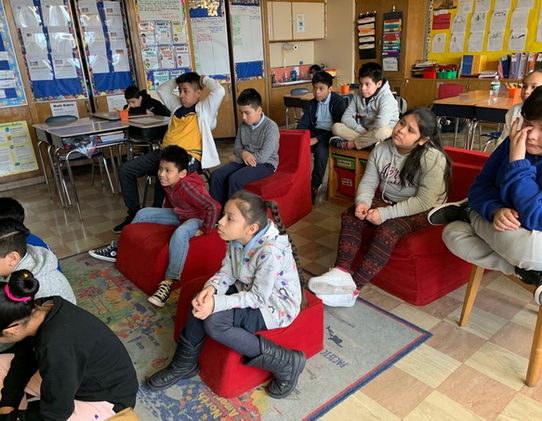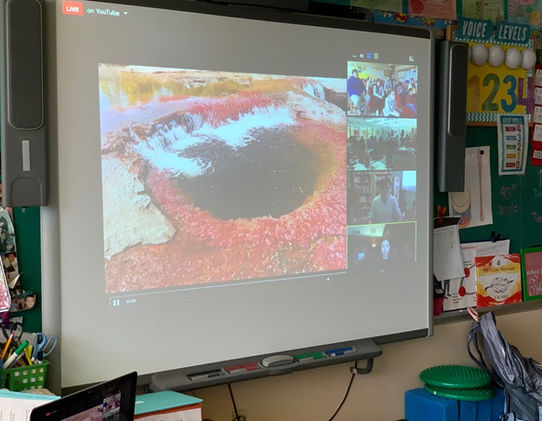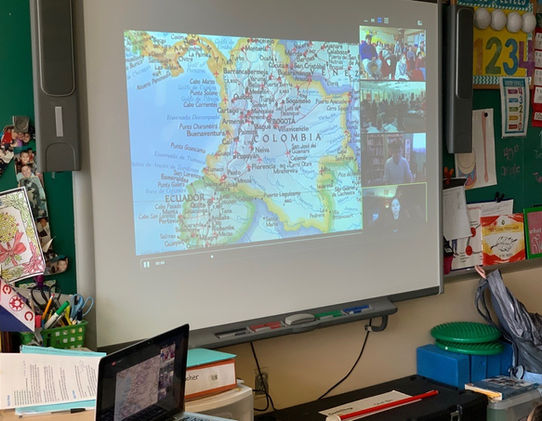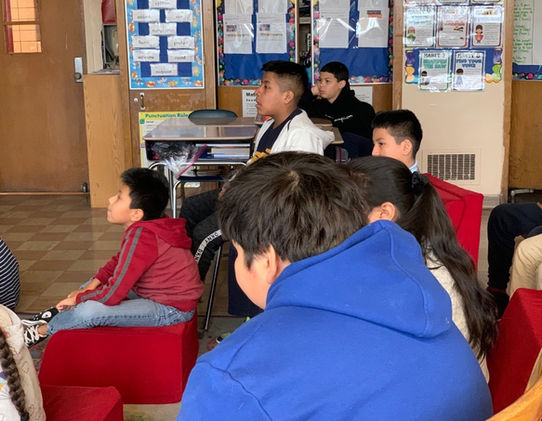The Power of Virtual Exchange
"The World is As Big Or As Small As You Make It" is the name of a short film that was debuted in the 2015 Sundance Film Festival. This film shows the benefits of using video conferencing to connect classrooms around the world. Over the last few years, I have used all types of video conferencing platforms to give my students the opportunity to explore the world beyond the boundaries of their neighborhoods. Although it can benefit to partner with an organization to connect to travelers and experts around the world, I began doing video conferencing with a Skype call from my classroom to my parents house about 14 miles away.
Depending on the purpose of the virtual exchange, you can meet the goals of any part of the SAMR model. It's really important that you create the norms for virtual exchange with your students. Please note that those norms should co-created with your students and should be revisited as necessary. The Collaboratory at the Bureau of Educational and Cultural Affairs of the US State Department has created a wonderful guide if you are considering using any video conferencing tools to create a virtual exchange.
Below are some ways I have used virtual exchange in my classroom both pre and post pandemic.
Recognizing Perspectives: The Life of a Fulbright ETA in Bucaramanga, Colombia
In October 2019, my students began our partnership with Rachel through an organization called Reach The World. Rachel was a Fulbright ETA working at a university in Bucaramanga, Colombia. Rachel wrote field notes and journals for our class about the culture, traditions and geography of Colombia. As part of this partnership, she also participated in 5 live video conferences with my class prior to our school closing due to the pandemic.
During our live video conferences Rachel would share artifacts and stories and participate in a lively dialogue with my students. I have participated in these types of virtual exchanges with Reach the World before but our experience with Rachel was very unique. Rachel and I fell into a very comfortable rhythm of team teaching during these video calls. Although, we had a lot of dialogue about traditions and culture, they were never one-sided discussions. My students did as much sharing about their own lives as much as Rachel did about living in Colombia. When I think about these exchanges in terms of the SAMR model, they fall into the modification and redefinition components. Some of these exchanges could have occurred through letters or phone calls but the dialogue would not have been as impactful and the relationship that resulted between Rachel and my students, may not have came to be without video conferencing. In between video conferences, we used Rachel's written content to complete many asynchronous activities such as creating a travel magazine about Colombia, building topographical maps of Colombia using salt dough and responding to individual field notes using FlipGrid. For our video calls prior to the pandemic, we chose to use Skype. There were difficulties at times using this platform but it was important for us to internalize norms for when there are problems with the internet that result in a lag or frozen screen. Skype is not the only platform we could have used. During the 2018-2019 school year, my class was partnered with a traveler in Ulaanbaatar, Mongolia. She preferred using Facetime because it was more reliable than Skype or Zoom. When choosing a platform for a virtual exchange, it is very important to run a test call for your chosen platform.
Investigating the World: Exploring the Red River in Caño Cristales, Colombia
On January 27, 2020 my class was invited to participate in a Zoom call with Brianna Rowe. Brianna Rowe is a member of The Explorers Club and she was going to be discussing her trip to the Red River at Caño Cristales in Colombia. This call was hosted by Exploring By the Seat of Your Pants. Although my class had a relationship with Brianna from Reach The World and The Explorers Club, this was different because we were not the only participants. Classrooms from all over North America were participating in the Zoom call and there were students participating on Youtube Live. Initially, my students were frustrated that they had to wait to ask questions, the experienced helped them understand they can learn from other students.
In terms of the SAMR model, this virtual exchange was also both modification and redefinition. Our Fulbright ETA, Rachel, in Colombia had not been to the Red River so we were using research strategies to interview an expert on this particular geographical feature of Colombia. This exchange also had a direct impact on the topographical maps the students were creating. Two of the small groups chose to add Caño Cristales to their topographical maps. The students also chose to teach Rachel about Caño Cristales during our next video call with her and they wrote about Caño Cristales during their weekly emails to Rachel.
















